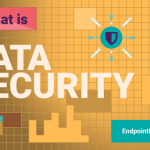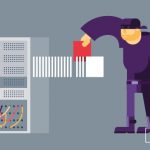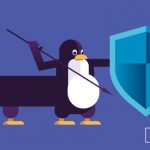
As macOS gains ground in the enterprise due to the increasing adoption of bring-your-own-device (BYOD) and corporate-owned personally-enabled (COPE) policies, the security of the devices running it is often overlooked.
This is a result of a few prevalent myths about Macs. It is commonly believed they are impossible to attack, but difficult to manage which makes securing their data a burden most IT managers prefer to do without. But with the rising tide of data protection regulations sweeping the globe, such dismissals of data security no longer have a place in the modern work environment. Sensitive data must be kept secure, not only from outsiders, but also insiders and oftentimes macOS’s native tools are not enough to ensure it.
The Myth of the Invulnerable Mac
Macs are considered low maintenance devices par excellence and many small companies adopt them in hopes of doing away with the burden of tech support and the worry of cyberattacks. With its solid Unix-based architecture and native encryption options, macOS does indeed make malicious attacks more challenging, but not impossible.
While up until a few years ago, Macs in the enterprise were seen like a niche choice reserved for the design and entertainment sectors, their lack of security management has spurred their adoption in the tech sector, where developers prefer devices that are not bogged down by company-mandated security software.
IT managers often complain about the difficulty of managing Macs and are reluctant to deploy additional software on them that may hinder employee productivity, slow Macs down or, in a worst-case scenario, cause kernel panics. Because of all this, IT departments wind up relying on Macs’ legendary invulnerability to threats without realizing that data security is not limited to outside attacks.
The Challenges of Macs in the Enterprise
As a direct consequence of the growing popularity of Macs in the workplace as well as companies’ reliance on their invulnerability, macOS-targeting attacks have been increasing as Macs become more attractive targets for cybercriminals. While the number is still nowhere near that of threats faced by PCs running on Windows, if not offered the same level of protection, they can become the weak point of a company’s security strategy.
More than half of all data leaks are caused by employee negligence or malice. Whether they accidentally or intentionally email sensitive information to their personal email accounts, post information publically, press reply all and send confidential information to the whole company or use third party services to share or edit sensitive documents, human error is at the heart of many data leaks. And no operating system will stop its authorized users from making mistakes or stealing data.
Keeping Data Secure on Macs
Companies can use Enterprise DLP solutions like Endpoint Protector to keep their sensitive data secure even on Macs. They can prevent vital information from leaving the company network and track its movement at all times.
Not only that, but Endpoint Protector, as one of the first DLP solutions to extend its tools to the macOS environment, offers feature parity between Macs and PCs, ensuring that data on devices running macOS is as secure as it is on a Windows PC. There is also no need for multiple accounts to manage each OS individually, but all a company’s endpoints, regardless of their operating system, can be managed from a single dashboard.
Luckily, myths are just misconceptions. If using the right tools, securing data on Macs can be as easy as it is on their Windows running counterparts, with minimal impact on employees’ efficiency and a device’s speed. Companies must simply ensure that the solution they choose offers the same level of protection as a Windows-aimed product, rather than being a simplified version of it.
Download our free ebook on
Data Loss Prevention Best Practices
Helping IT Managers, IT Administrators and data security staff understand the concept and purpose of DLP and how to easily implement it.















